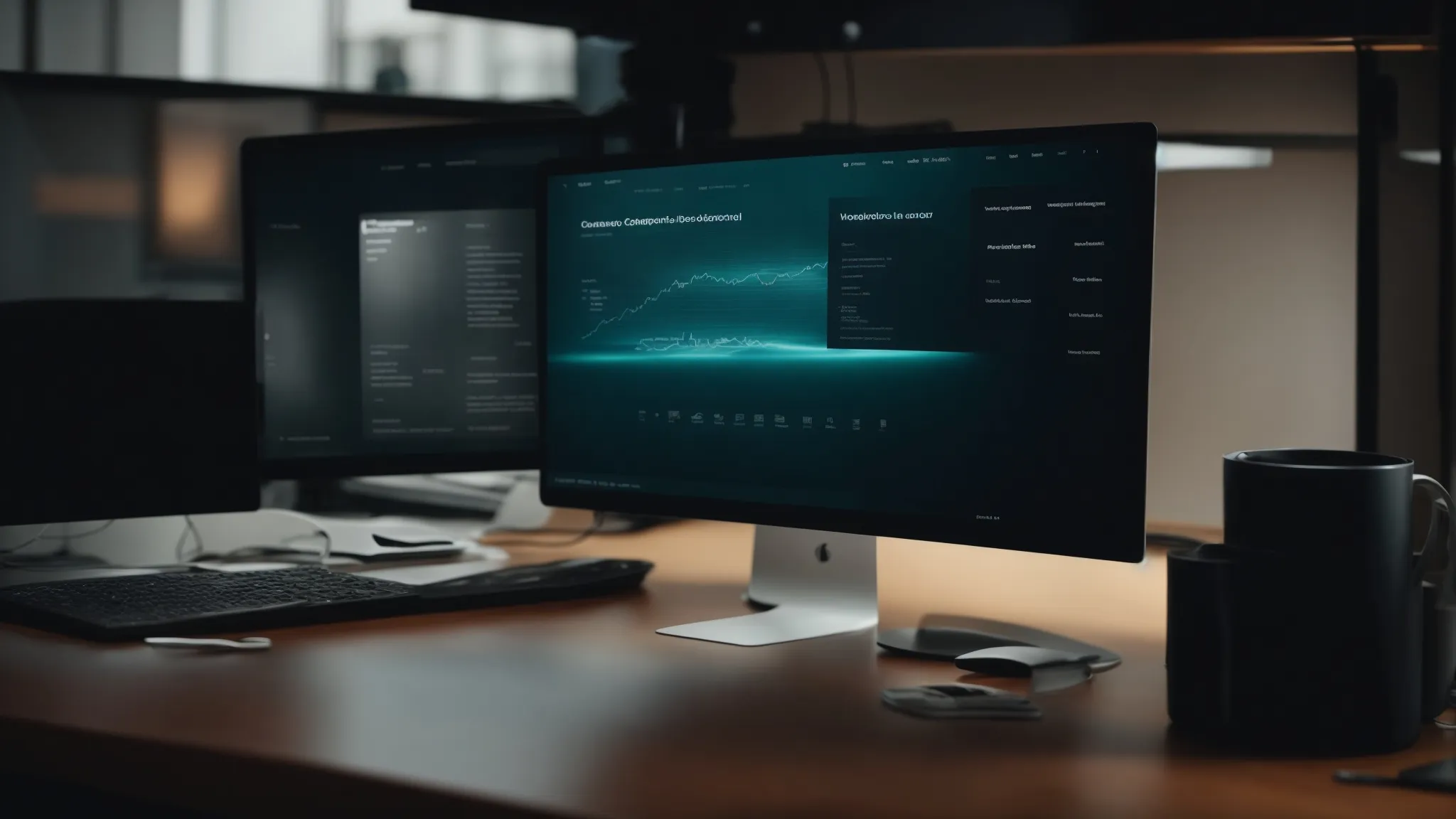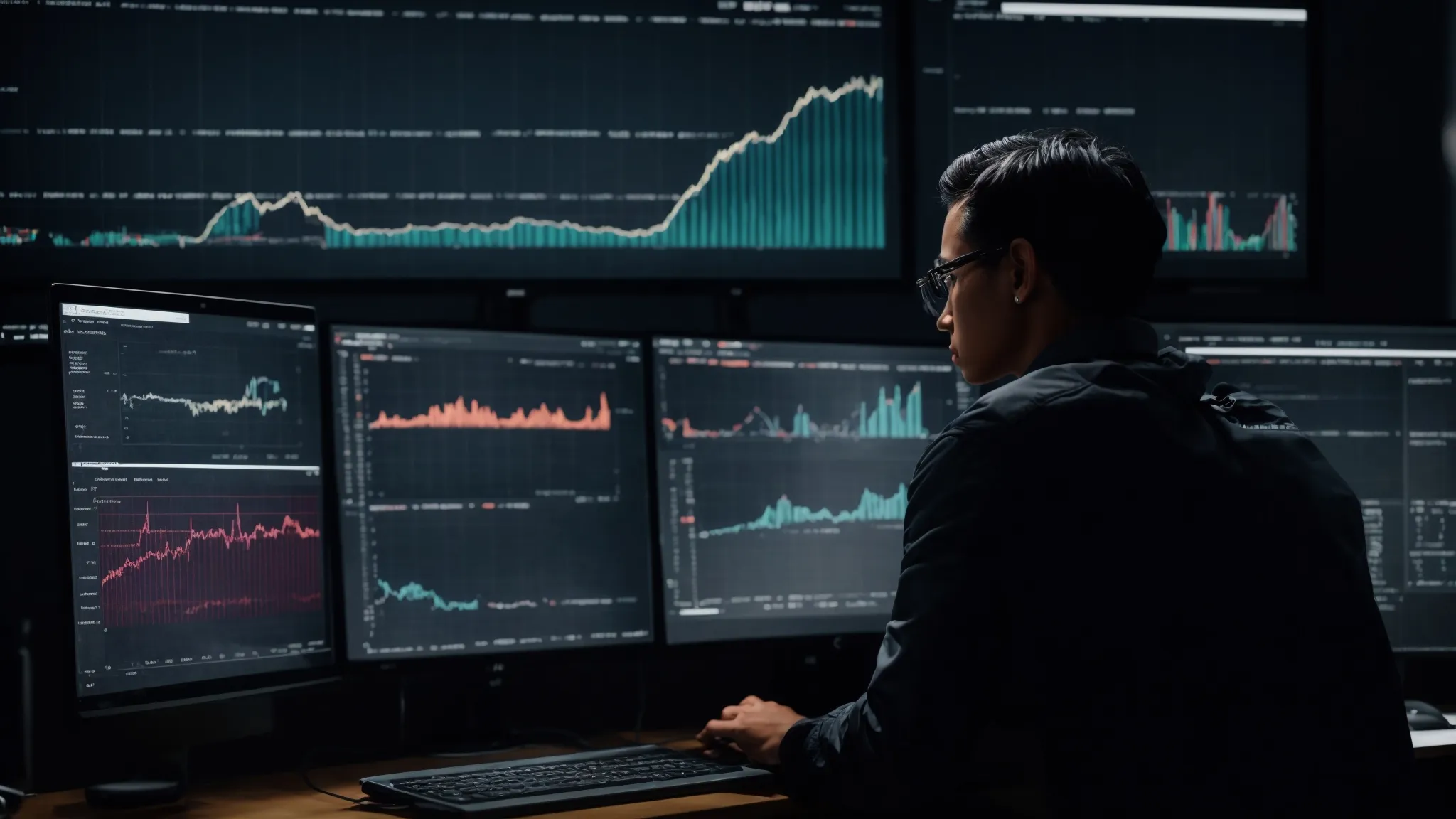Boost Your Website Rankings: Flash SEO Techniques Unveiled
How to Do SEO for Flash Websites As search engines continually evolve, the compatibility of Flash with effective search engine optimization (SEO) remains a perplexing challenge. Optimizing […]
How to Do SEO for Flash Websites
As search engines continually evolve, the compatibility of Flash with effective search engine optimization (SEO) remains a perplexing challenge.
Optimizing a Flash website for SEO is a unique endeavor, requiring a strategic blend of technical prowess and creative content approaches.
Developers and designers must navigate the intricacies of search engine crawlers, ensuring that the rich, dynamic experiences created by Flash do not come at the expense of visibility and search ranking.
This article offers valuable insights into transforming Flash projects into search-friendly platforms, enhancing user engagement without sacrificing performance.
Keep reading to discover practical techniques and the comprehensive services offered by LinkGraph to bring your Flash content to the forefront of search results.
Key Takeaways
- Flash Websites Face Unique Challenges in SEO Due to Difficulty in Indexing and Slower Load Times
- LinkGraph Offers Tailored SEO Services That Help Flash Sites Improve Performance, Visibility, and User Experience Across All Devices
- Techniques Like Deploying HTML5, SWFObject Script, and Sitemaps Are Critical for Flash Content Accessibility and Search Engine Indexing
- Continued Optimization and Education on Best SEO Practices for Flash Are Necessary to Maintain Relevance in an Evolving Digital Landscape
- Analytical Tools Like LinkGraph’s Search Atlas Are Essential to Monitor SEO Performance and Inform Strategic Adjustments for Flash Websites
Understanding Flash Limitations in SEO

In the dynamic landscape of search engine optimization, grasping the nuances of various web technologies is pivotal for achieving desired search rankings.
Websites utilizing Flash often contend with unique SEO hurdles, as search engines traditionally grapple to effectively index Flash content.
This stems from Flash’s typically slower site speed, which can hamper a website’s SEO performance.
Additionally, Flash websites might face compatibility issues on mobile devices, given the accelerated shift towards mobile-first indexing.
The consequential lack of content visibility is another considerable affliction, directly impacting a website’s ability to be discovered and, subsequently, ranked by search engines.
Each of these challenges merits a comprehensive examination, fostering a clearer understanding for developers aiming to optimize Flash sites while adhering to SEO’s best practices.
Explore Why Search Engines Struggle With Flash Content
Search engines are engineered for the swift parsing and indexing of text-based content, whereas Flash-based websites encapsulate their content within SWF files. This encapsulation poses a formidable challenge, as SWF files require search engine crawlers to identify and understand the content as text, a process not as straightforward as with HTML or other text-based frameworks.
The sophistication of animations and interactivity that Flash websites proffer often comes at the expense of easily extractable information. When search engine crawlers encounter such complexities, the resultant effect can be incomplete or fragmented indexing, which ultimately stunts the site’s visibility in search results.
Analyse the Impact of Site Speed on Flash Website SEO
The loading results of Flash-rich websites can be a deterrent to enhanced search rankings. Site speed is a critical aspect search engines consider when evaluating user experience, and slower Flash applications can significantly extend load times, diminishing the visitor’s engagement and increasing bounce rates.
LinkGraph’s SEO Audit pinpoints these performance bottlenecks, aiding developers in optimizing Flash content for improved loading speeds. This attention to expediting access to Flash-rich media is integral to maintaining competitive search ranking and favorable user interactions.
| SEO Challenge | Consequence | LinkGraph Solution |
|---|---|---|
| Slow Load Times | Lower Search Rankings | SEO Audit and Performance Optimization |
| Compatibility Issues | Diminished Mobile User Experience | Strategic Content Adaptation |
| Content Visibility | Reduced Discoverability | Enhanced Indexing Techniques |
Consider Compatibility Issues With Mobile Devices
Optimizing Flash websites for mobile compatibility is a significant undertaking as flash content often fails to display on a number of mobile devices. This incompatibility can result in subpar user experiences, as a considerable percentage of internet traffic originates from mobile users. LinkGraph’s One-Page SEO Services assists clients in mitigating these issues by implementing Mobile-Friendly Solutions that align with current web design standards.
LinkGraph recognizes the importance of mobile search criteria and how they influence search engine perceptions. Their SEO experts fine-tune Flash websites to ensure functionality across all platforms, thus preserving the integrity of the user experience. This approach not only accommodates the modern user’s needs but also bolsters the site’s SEO standing amid the ever-evolving landscape of search engine algorithms.
Identify How Lack of Content Visibility Affects SEO
The visibility of content on Flash websites significantly dictates their search engine optimization success. If a visitor cannot readily find information due to Flash designs, search engines are likely to exhibit similar difficulty, resulting in subdued content visibility and diminished SEO outcomes.
| SEO Element | Flash Website Issue | Impact on SEO |
|---|---|---|
| Content Visibility | Non-textual Flash elements conceal vital information | Lower search engine ranking due to poor indexing |
| User Experience | Inaccessible content on various devices | Increased bounce rates, leading to further SEO penalties |
LinkGraph’s multifaceted approach to Enhancing Content Visibility extends beyond traditional methods, focusing on strategic embedding of text content within Flash. Their expertise facilitates the creation of searchable, index-friendly Flash websites, elevating them in search rankings despite their intrinsic challenges:
Enhancing Flash Websites for Better SEO

Optimizing Flash websites for search engines presents a distinct set of challenges that require a targeted and informed approach.
Webmasters and SEO professionals must engage in a creative mix of techniques to ensure these sites are not only accessible but also attractive to the algorithms that determine their online visibility.
Techniques such as refurbishing Flash files with SEO-friendly practices, leveraging HTML5 alternatives for greater content accessibility, deploying sitemaps that guide search engines through Flash content, and cultivating clear navigation to boost user engagement are pivotal in transforming a Flash-based site into one that performs competitively in search rankings.
This introduction paves the way for in-depth exploration of these vital strategies, reinforcing the overarching goal of synthesizing Flash innovation with robust search engine optimization.
Optimize Flash Files With SEO-friendly Techniques
To enhance a Flash website’s SEO performance, developers need to implement tactics that allow content within SWF files to be more accessible to search engine crawlers. One effective tactic involves incorporating SWFObject, a JavaScript script that promotes the detection of Flash content, thereby helping search engines understand and index multimedia elements seamlessly.
Another key technique lies in the strategic use of meta descriptions and title tags that mirror the Flash video or animation content. LinkGraph’s SEO services ensure that these crucial HTML page elements are optimized with relevant keywords and anchor text, fostering improved search engine recognition and a boost in search rankings for Flash websites.
Use HTML5 Alternatives to Improve Content Accessibility
Transitioning from Flash to HTML5 presents an optimal path for improving content accessibility and maintaining relevance in the evolving digital landscape. HTML5’s inherent compatibility with search engine algorithms enables it to surpass the limitations of Flash by offering enhanced content visibility and mobile responsiveness.
LinkGraph’s adaptation services facilitate this transition, ensuring that multimedia elements previously confined within Flash can be reimagined and effectively indexed as HTML5 elements. This strategic shift strengthens a website’s SEO foundation and allows for broader reach in search engine results:
| Original Technology | SEO Challenge | LinkGraph Strategy |
|---|---|---|
| Flash | Limited content visibility | Transition to HTML5 for enhanced indexing |
| Flash (Mobile Incompatibility) | Poor mobile user experience | Deploy responsive HTML5 design for mobile optimization |
Implement Sitemaps to Help Search Engines Index Flash Content
Implementing sitemaps serves as a navigational guide for search engine crawlers, aiding them in the comprehensive indexing of Flash content. The presence of a well-designed sitemap allows search engines to discover all the relevant SWF files and their corresponding metadata, ensuring that no piece of content goes unnoticed.
This method of sitemap utilization is crucial in the optimization of Flash websites for search engines: it delineates the site’s structure clearly and directly informs crawlers about the location of content assets. Thus, sitemaps facilitate a more effective indexing process and enhance the overall SEO strategy:
- Create a detailed sitemap including all Flash assets.
- Ensure inclusion of accurate metadata for SWF files within the sitemap.
- Update sitemaps regularly to reflect new or modified Flash content.
Ensure Clear Navigation for Better User Engagement
Clear navigation stands as a cornerstone of user engagement, vitally important for sustaining visitor interest and interactions on Flash websites. It enables users to effortlessly find the information they seek, thereby bolstering the likelihood of conversions and reducing the chance of user frustration.
LinkGraph’s approach to navigation refinement includes designing intuitive menu structures and clear, concise call-to-action buttons that guide visitors through the website’s offerings. By streamlining the user journey, LinkGraph enhances both the user experience and the website’s potential to climb the search engine rankings.
Combining Flash With HTML for SEO Advantages

Embarking on the optimization of Flash websites demands an inventive fusion of Flash with contemporary web development conventions.
This synthesis focuses on enhancing search engine visibility without sacrificing the interactive and visual appeal Flash is renowned for.
Merging Flash elements with HTML page structures, invoking CSS and JavaScript for enriched multimedia presentation, and applying progressive enhancement tactics form the triad of strategies aimed at propelling Flash websites up the search rankings.
These methodologies exemplify a commitment to maintaining the aesthetic integrity of Flash while fortifying the framework’s search engine compatibility.
Integrate Flash Elements Seamlessly With HTML Pages
For those striving to merge Flash elements with HTML, the crux lies in the seamless integration that maintains both the functional prowess and the SEO value of the web property. LinkGraph’s team works assiduously to embed SWF files within HTML pages in a manner that ensures they contribute positively to the site’s search engine visibility without detracting from the user experience.
This strategic blending facilitated by LinkGraph transcends basic incorporation; it renders Flash components as part of the holistic web design that resonates with both search engine algorithms and site visitors. The process involves meticulous alignment of Flash animations with HTML5 structures, paving the way for improved indexation and heightened cross-device compatibility.
Leverage the Power of CSS and JavaScript for Richer Content
LinkGraph’s proficiency extends to enhancing Flash websites with CSS and JavaScript, thereby enriching the content’s presentation and functionality. Utilizing these technologies elevates the visual narrative and interactivity of a website, simultaneously catering to the user’s experience and SEO enrichment.
Through the strategic implementation of these scripting languages, Flash elements become more engaging and contribute more meaningfully to the website’s organic ranking. LinkGraph’s meticulous application of CSS styles and JavaScript interactions ensures that all web elements are both aesthetically pleasing and optimized for search engine visibility.
Employ Progressive Enhancement Strategies for Improved Visibility
Progressive enhancement strategies prioritize the accessibility of core web content, supporting SEO by ensuring that even if Flash elements fail to load, the essential content remains visible to search engines: a key tenet for improved site visibility. LinkGraph leverages these strategies to construct layered experiences, where basic HTML content serves as the foundation, progressively enriched with Flash components for those with capable browsers.
- Ensure fundamental HTML content is crawlable and serves core information.
- Enhance user experiences incrementally by adding Flash elements.
- Maintain focus on content relevancy and structural optimization.
Employing this structured approach presents a robust framework for Flash websites to be perceived favourably by search engines. By methodically layering the user experience, LinkGraph ensures every visitor encounters a functional, aesthetically pleasing site while simultaneously enhancing the website’s SEO profile, leading to heightened visibility and improved search rankings.
Technical SEO Tips for Flash Websites

Optimizing Flash websites for search engine visibility presents unique complexities that require specific Technical SEO Tips.
Enhancing these websites demands expertise in deploying advanced SEO techniques tailored to their nuances.
Initiatives such as utilizing Adobe’s SWFObject, applying deep linking for user-accessible content, and enabling server-side scripting to present Flash content metadata are pivotal in carving out a visible digital presence for Flash-based sites.
These interventions aim to bridge the gap between Flash’s immersive multimedia experiences and the pragmatic requirements of search engine algorithms, improving the discoverability and reach of Flash websites within the digital ecosystem.
Utilize Adobe’s SWFObject for Better Search Engine Visibility
Flash websites can enhance their search engine visibility by harnessing the capabilities of Adobe’s SWFObject. SWFObject is a widely adopted script used to embed Flash content reliably across various web browsers, ensuring that interactive elements are accessible and efficiently indexed by search engines.
Incorporating SWFObject reduces the likelihood of Flash content being overlooked during the indexing process by providing alternative HTML content as a fallback for search engine crawlers. This two-fold approach facilitates the broader visibility of multimedia elements that might otherwise impede a website’s SEO performance:
| SEO Technique | Tool | Outcome |
|---|---|---|
| Flash Embedding for Cross-Browser Compatibility | SWFObject Script | Universal Accessibility of Flash Content |
| Alternative HTML Content for SEO | SWFObject Fallback | Ensured Indexing of Multimedia Elements |
Apply Deep Linking to Make Flash Content More Accessible
Deep linking represents a crucial technique for those navigating the complexities of SEO for Flash websites, as it directly tackles the accessibility barriers that Flash components typically erect. It enables individual Flash elements to be indexed and linked to, similar to standard HTML content, fostering ease of navigation directly to specific sections within the Flash application.
By implementing deep linking, LinkGraph’s SEO specialists ensure that valuable Flash content is no longer hidden from search engines, thereby improving site structure and user experience. This practice not only enhances the functionality of Flash websites but also aligns with search engines’ criteria for content accessibility, thereby aiding in elevating a website’s visibility in search results.
Enable Server-Side Scripting to Display Flash Content Metadata
Server-side scripting emerges as a salient tool to enhance the SEO of Flash websites by promoting the display of invaluable metadata associated with Flash content. LinkGraph’s adept application of server-side technologies such as PHP or ASP.NET assists in dynamically presenting this metadata, allowing search engine crawlers to better understand and index the rich media content encapsulated within Flash files.
Utilizing server-side scripting, LinkGraph ensures that critical information such as titles, descriptions, and keywords embedded in Flash content are rendered into the HTML source code accessible to crawlers. This technique amplifies visibility in search engine results, as Flash assets become more discernible in the online landscape and contribute effectively to the website’s overall SEO footprint.
Content Strategies to Complement Flash SEO

Embarking on the optimization of Flash-based websites for search engines entails adopting a conscientious approach to content development.
Crafting a robust content strategy that complements the unique needs of Flash elements is imperative.
This involves not only the cultivation of content-rich pages that resonate alongside Flash components but also the creation of text alternatives and the astute use of descriptive metadata.
Such strategies ensure that all content, irrespective of format, is indexed and understood by search engines, laying the groundwork for enhanced online visibility and improved search rankings.
Develop Content-Rich Pages That Work Alongside Flash Elements
Within the architecture of a Flash-driven site, the integration of content-rich pages is paramount for SEO efficacy. These pages must be strategically curated to operate in concert with Flash elements, ensuring they provide valuable text-based information to search engines, which bolsters the site’s organic search profile.
The aggregation of comprehensive textual content supports Flash websites by enhancing discoverability within the search landscape: it provides substance for search engine crawlers to latch onto, interpret, and rank. Comprehensive, keyword-infused pages supplement the multimedia prowess of Flash, resulting in a cohesive SEO strategy:
| Flash Element | Content Strategy | SEO Benefit |
|---|---|---|
| Interactive Flash Animations | Descriptive, keyword-rich textual narratives | Enhanced context and crawlability for search engines |
| Flash Video Content | Transcriptions and summaries with targeted keywords | Increased textual content for indexing and ranking |
Create Text Equivalents for All Flash Content for SEO Indexing
Creating text equivalents for Flash content is fundamental to ensuring that search engine crawlers can index a website’s rich multimedia assets effectively.
Instituting a parallel textual narrative for a Flash website’s visual and interactive features not only enhances accessibility for varying user capabilities but also solidifies the website’s search engine footing:
| Flash Feature | Text Equivalent | SEO Advantage |
|---|---|---|
| Animations and Interactivity | Descriptive Transcripts and Captions | Improved Indexing and User Understanding |
| Video and Multimedia | Supporting Articles and Summaries | Content Richness for Enhanced Rankings |
LinkGraph employs this approach vigorously in optimizing Flash content to meet the SEO audit’s criteria for excellence in content visibility and relevancy. This strategy not only drives user engagement but also offers the comprehensive coverage that search engines require for favorable rankings.
Use Descriptive Metadata Within Flash Files for Search Engines
Incorporating descriptive metadata within Flash files is a strategic SEO maneuver that eases the task for search engines in discerning the content harbored in rich media. LinkGraph specializes in embedding relevant titles, descriptions, and keyword tags directly into Flash files to facilitate their detectability and indexing by search engine crawlers, thereby optimizing the Flash website for better search engine rankings.
The meticulous insertion of metadata by LinkGraph offers a distinct advantage in enhancing the discoverability of Flash content on the vast digital landscape. This technique safeguards the visibility of Flash-based elements, ensuring that they contribute to a website’s comprehensiveness and relevancy in the eyes of search engines, which can lead to improved organic search results and user engagement.
Monitoring and Improving Flash Website SEO Performance

To secure a competitive edge in the digital milieu, vigilance and iterative improvement are critical, particularly for Flash websites navigating the multifaceted realm of SEO.
Owners and developers should employ analytics tools to meticulously monitor performance, gleaning actionable insights that inform the ongoing refinement of their Flash content.
This proactive stance, coupled with a commitment to assimilating the latest SEO best practices for Flash, sets the stage for sustained growth in search rankings and enhanced user engagement.
These foundational efforts underpin the relentless pursuit of SEO mastery, pivotal for any Flash website aiming to prosper in an ever-evolving search landscape.
Track Your Flash Website’s SEO Performance With Analytics Tools
Employing analytical tools to track the SEO performance of Flash websites is essential for discerning their impact on search engine rankings. LinkGraph’s Search Atlas provides real-time data that pinpoints areas where Flash content may be hindering SEO progress, enabling timely and precise adjustments.
LinkGraph’s advanced analytics deliver insights into user behavior and search engine interactions with Flash elements. This enables site owners to make data-driven decisions, Optimizing for Both Visitor Engagement and improved search engine visibility, ultimately enhancing the overall performance of Flash websites in search results.
Regularly Update Flash Content Based on SEO Data Insights
Continuous evolution in search engine algorithms necessitates that websites, Flash-based or otherwise, remain agile through regular updates and refinements. LinkGraph equips Flash website owners with actionable SEO data insights from Search Atlas, enabling them to tweak Flash content promptly and maintain competitive search result standings.
Using real-time analytics allows stakeholders to identify performance trends and implement strategic updates that resonate with current search engine preferences. This proactive approach not only keeps Flash content fresh but also aligns it with the latest search criteria, solidifying a website’s relevance and authority within its niche.
| SEO Activity | Objective | SEO Outcome |
|---|---|---|
| Regular Flash Content Updates | Align with Latest Algorithm Changes | Maintained or Improved Search Rankings |
| Data-Driven Content Refinements | Optimize for User Engagement | Increased Traffic and User Retention |
Engage in Continuous Learning of SEO Best Practices for Flash
For developers and website owners who maintain Flash-based platforms, engaging in continuous learning of SEO best practices is not just beneficial; it’s a necessity for maintaining online relevance. The digital landscape is one of perpetual change, with search engine algorithms and user expectations evolving constantly.
Flash websites require a discerning understanding of these best practices to ensure that their content continues to be discoverable and favored by search engines. LinkGraph, through its expertise, provides an essential resource for staying ahead of the curve in Flash SEO proficiency.
- Fostering an ongoing education on the integration of Flash with modern SEO techniques.
- Adapting to the latest search engine updates that impact Flash content’s visibility.
- Implementing advancements in scripting and metadata to enhance Flash SEO effectiveness.
Frequently Asked Questions
What are the limitations of flash websites when it comes to SEO?
Flash websites, despite their visual appeal, grapple with serious limitations in search engine optimization due to their typically undecipherable content for search engine crawlers. These limitations include inaccessibility to crawlers leading to poorer visibility in search results and reliance on outdated technology that fails to align with modern SEO best practices.
How can I enhance the SEO of my flash website?
Enhancing the SEO of a Flash website requires a multifaceted approach: one must supplement Flash content with HTML content to ensure search engine crawlers can interpret and index the site effectively. Engaging with a seasoned SEO service provider like LinkGraph can offer critical insights and actions like SEO audit and the incorporation of best practices for a comprehensive optimization strategy.
Is it possible to combine flash with HTML for SEO advantages?
Integrating Flash with HTML can pose significant challenges for SEO, as search engines traditionally struggle to crawl and index Flash content effectively. However, with strategic implementation and the incorporation of HTML5, it’s possible to design a user-focused experience that also caters to search engine guidelines.
What are some technical SEO tips for flash websites?
Navigating the technical SEO landscape for Flash websites requires a nuanced approach, considering the complexities Flash content presents to search engine crawlers. Key strategies include implementing HTML5 alternatives for critical content and enhancing visibility through a robust, text-based navigation system.
What are some strategies to improve the SEO performance of a flash website?
Improving the SEO performance of a Flash-based website often hinges on replacing Flash elements with HTML5, as it is more search engine friendly and enhances user experience. Additionally, embedding Flash content in a way that allows search engine crawlers to extract textual information, perhaps through the use of SWFObject scripts for providing alternative HTML content, will aid in bolstering visibility within search results.
Conclusion
In conclusion, effectively performing SEO for Flash websites is essential to navigate their inherent challenges and ensure online visibility.
By optimizing Flash content, employing HTML5 alternatives, implementing sitemaps, ensuring universal compatibility, and applying progressive enhancement strategies, we can overcome obstacles such as slow load times and compatibility issues.
Using tools like Adobe’s SWFObject and server-side scripting, alongside crafting content-rich pages and incorporating descriptive metadata, further refines the SEO approach for Flash sites.
Regular monitoring with analytics tools, updating content based on insights, and staying informed of SEO best practices are crucial for maintaining search rankings and user engagement.
Ultimately, combining Flash’s interactive appeal with robust SEO practices is key to a website’s competitive edge in the search landscape.














































































